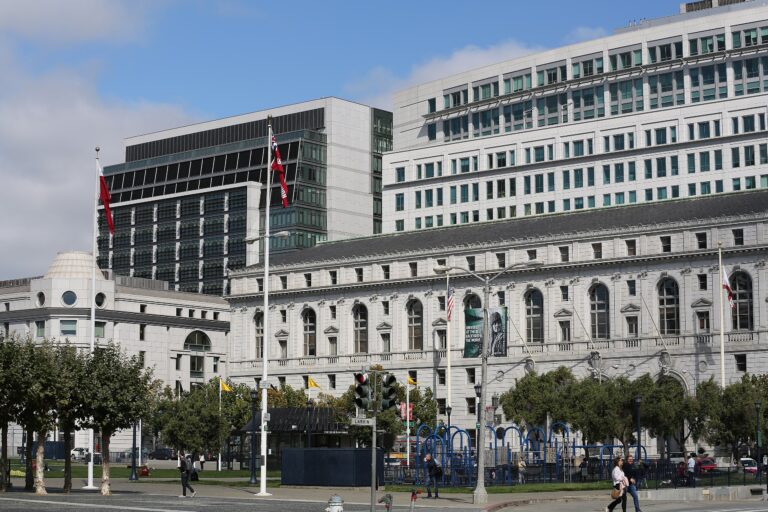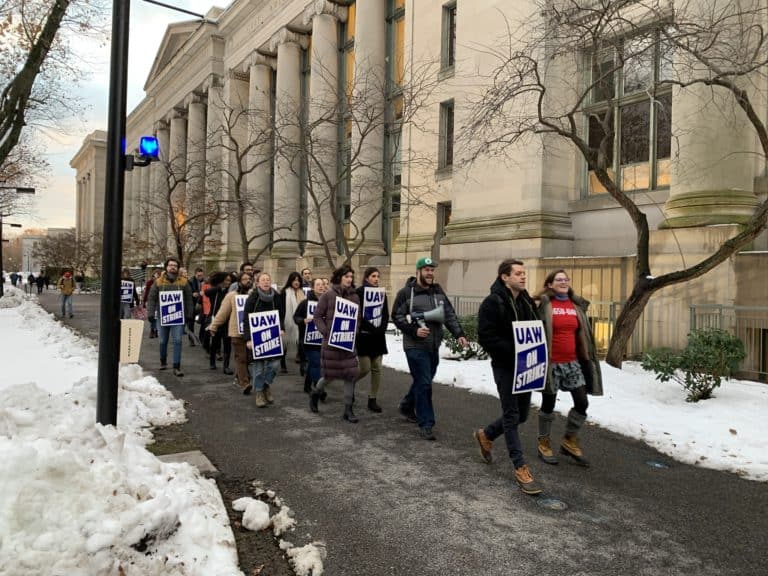
Benjamin Sachs is the Kestnbaum Professor of Labor and Industry at Harvard Law School and a leading expert in the field of labor law and labor relations. He is also faculty director of the Center for Labor and a Just Economy. Professor Sachs teaches courses in labor law, employment law, and law and social change, and his writing focuses on union organizing and unions in American politics. Prior to joining the Harvard faculty in 2008, Professor Sachs was the Joseph Goldstein Fellow at Yale Law School. From 2002-2006, he served as Assistant General Counsel of the Service Employees International Union (SEIU) in Washington, D.C. Professor Sachs graduated from Yale Law School in 1998, and served as a judicial law clerk to the Honorable Stephen Reinhardt of the United States Court of Appeals for the Ninth Circuit. His writing has appeared in the Harvard Law Review, the Yale Law Journal, the Columbia Law Review, the New York Times and elsewhere. Professor Sachs received the Yale Law School teaching award in 2007 and in 2013 received the Sacks-Freund Award for Teaching Excellence at Harvard Law School. He can be reached at [email protected].
Fifteen years ago, almost no one in the country knew what a “worker center” was. But in the last several weeks, worker centers have been the focus of a front page story in the Wall Street Journal and an excellent, extensive piece by Steve Greenhouse in the New York Times. Then, the day after the Journal story, Rep. John Kline (Chairman of the House Committee on Education and the Workforce) sent a letter to the new Secretary of Labor asking for action on worker centers. In particular, Kline wants the DOL to determine whether worker centers qualify as “labor organizations” under the Labor Management Reporting and Disclosure Act (LMRDA). This sounds like arcana, but its not. It matters, and here’s why:
To start, worker centers matter. Although there is a lot of variation, the centers are non-profit organizations that typically provide services (like legal representation, know-your-rights trainings, and sometimes job-search assistance) to their low-wage members. They often also engage in advocacy activity: for example, organizing protests or pickets of employers who fail to pay legal wages. (More detail here in Janice Fine’s work on the subject.) Sometimes, especially more recently, worker centers have formed partnerships with traditional unions.
In the eyes of many observers, worker centers are part of the way forward for the labor movement. In the Greenhouse piece, for example, labor historian Jefferson Cowie put it this way: “Worker centers are part of the broad scramble of how to improve things for workers outside the traditional union/collective bargaining context. They’ve become little laboratories of experimentation.” And Greenhouse describes a recent meeting of one of the centers this way: “The energy and sense of solidarity were reminiscent of what America’s labor unions had many decades ago, before they started to stumble and stagnate.”
It is undoubtedly testament to the energy worker centers are bringing to a declining labor movement that they are now the subject of scrutiny and attack. Kline’s letter is one piece of this new attention. The Center for Union Facts is also directing its energy toward the worker center movement, running a critical advertisement in the Journal and starting a website (workercenters.com) that allows readers to “report a worker center.” Similar to Kline’s letter, the Center is calling for a determination that worker centers are “labor organizations” under the LMRDA. [NB: Whether a worker center qualifies as a “labor organization” under the NLRA is a separate issue, that calls for a separate analysis, and that has distinct implications. This question will be worth a subsequent post, but for the NLRB’s most recent statement on this issue, see the Advice Memorandum in Restaurant Opportunities Center of New York.]
If a worker center is designated a “labor organization” under the LMRDA it would face a series of federal legal regulations that are highly unusual in their extent and intrusiveness. The law would require the centers to file detailed financial reports with the Department of Labor, disclosing an array of data that would then be made available to the general public. The law would also impose on the organizations particular rules about how they must be structured and governed internally.
As under the NLRA, in order to qualify as an LMRDA labor organization, a worker center would have to exist “for the purpose, in whole or in part, of dealing with employers concerning grievances, labor disputes, wages, rates of pay . . . or other terms or conditions of employment.” This determination would be made by the Secretary of Labor, not the NLRB, but if the Board’s caselaw is any guide, the great majority of worker centers would not fit the bill. This is because the “dealing-with” requirement is satisfied only when there is a “pattern or practice” of bilateral exchange between the organization and management that extends “over time.” (E.I. Du Pont De Nemours & Co., 311 NLRB 893, 894 (1993)). The kinds of demands that worker centers usually make, often as part of an attempt to enforce legal rights, do not satisfy this statutory requirement.
But more broadly, and more importantly, the features of labor unions that justified the kinds of regulations that the LMRDA imposes simply do not obtain in the worker center context.
The LMRDA rules were developed in the mid-1950s as part of an effort to increase federal oversight of labor unions. The rules grew out of a series of investigations into unions that revealed some unions misusing member money, some union leaders being bribed by employers, and some evidence of fraud in union elections. This history of corruption was part of the justification for the dramatic incursion of the federal government into the internal affairs of these private organizations. But it wasn’t the only justification. It was also highly relevant that labor unions operated as exclusive bargaining representatives of their members. Exclusive representation means that, if you work in a union shop, you must be represented by the union and your terms and conditions of employment set by the union contract; your only other choice is to quit. This constraint on choice supplied a critical piece of the justification for the governmental mandates about internal governance. To borrow from Hirschman, because workers’ exit options were restricted by the rules of exclusive representation, it made sense for the government to mandate that they have a certain type of voice within the union.
Neither of these substantive justifications for regulating internal union affairs applies to worker centers. There is no history of worker center corruption, no evidence of the centers accepting bribes and selling out members, and certainly no history of violence. More important, worker centers do not serve as the exclusive representatives of their members. Thus, unlike in the union context, if a worker doesn’t like what a worker center is doing, she can leave – and she can leave without having to give up her job. The availability of this traditional exit option means that reasons for regulating internal union affairs simply do not exist in the worker center context.
None of this is categorical. “Worker center” is not a static concept, and if the centers evolve and take on more traditional bargaining functions, and certainly if they become exclusive representatives of their workers, they will become labor organizations within the meaning of the LMRDA. But those are not the worker centers we have today.






Daily News & Commentary
Start your day with our roundup of the latest labor developments. See all
September 15
Unemployment claims rise; a federal court hands victory to government employees union; and employers fire workers over social media posts.
September 14
Workers at Boeing reject the company’s third contract proposal; NLRB Acting General Counsel William Cohen plans to sue New York over the state’s trigger bill; Air Canada flight attendants reject a tentative contract.
September 12
Zohran Mamdani calls on FIFA to end dynamic pricing for the World Cup; the San Francisco Office of Labor Standards Enforcement opens a probe into Scale AI’s labor practices; and union members organize immigration defense trainings.
September 11
California rideshare deal advances; Boeing reaches tentative agreement with union; FTC scrutinizes healthcare noncompetes.
September 10
A federal judge denies a motion by the Trump Administration to dismiss a lawsuit led by the American Federation of Government Employees against President Trump for his mass layoffs of federal workers; the Supreme Court grants a stay on a federal district court order that originally barred ICE agents from questioning and detaining individuals based on their presence at a particular location, the type of work they do, their race or ethnicity, and their accent while speaking English or Spanish; and a hospital seeks to limit OSHA's ability to cite employers for failing to halt workplace violence without a specific regulation in place.
September 9
Ninth Circuit revives Trader Joe’s lawsuit against employee union; new bill aims to make striking workers eligible for benefits; university lecturer who praised Hitler gets another chance at First Amendment claims.